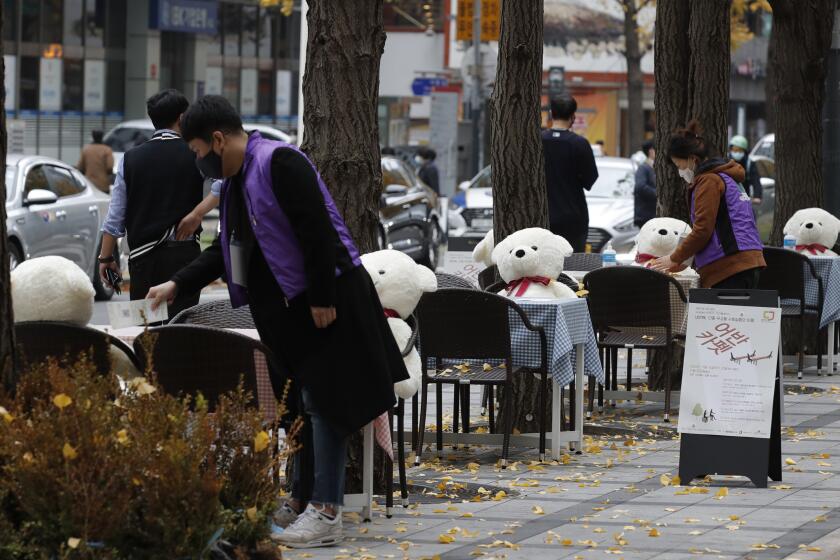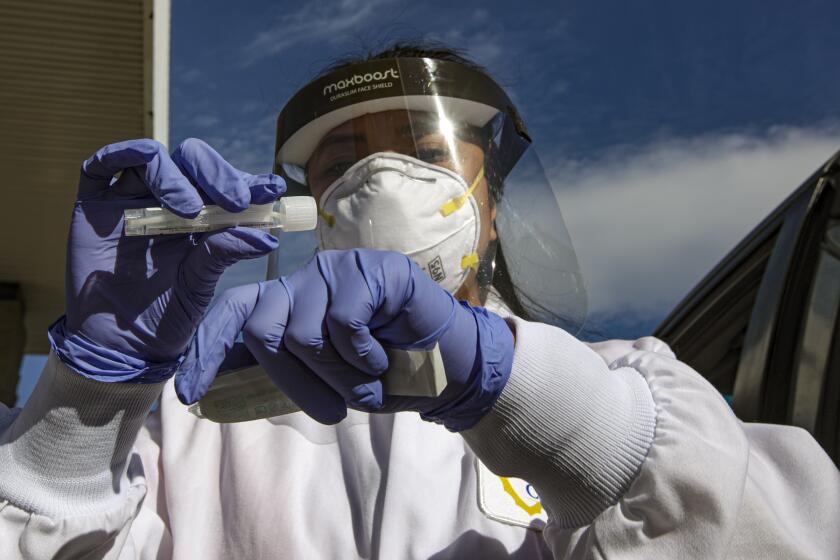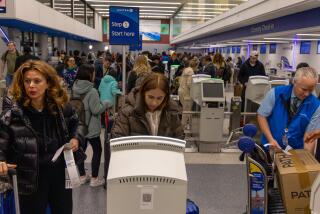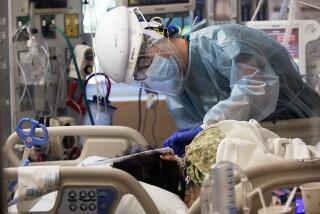San Jose hospital worker dies from COVID-19 outbreak possibly tied to inflatable costume
SAN FRANCISCO â An employee working the Christmas shift at Kaiser Permanente San Jose Medical Center has died after falling ill with COVID-19. The person was one of at least 43 staff members who tested positive for the coronavirus in recent days, an outbreak possibly linked to an employee who wore an inflatable holiday costume to lift spirits.
The staff member who appeared briefly in the emergency department on Christmas Day wore an air-powered, holiday-themed costume, according to a hospital executive. KNTV-TV, the San Jose NBC station that first reported the outbreak, reported that the costume was an inflatable Christmas tree.
Inflatable costumes are typically battery-powered and use a fan to keep the costume puffed up. Such a fan can propel virus particles in a room.
The person who wore the costume subsequently tested positive for the coronavirus, the hospital confirmed Monday.
KNTV-TV reported that the person who died was a woman who worked as a registration clerk in the emergency department.
âOur thoughts and prayers are with those affected by this terrible loss. We are providing support to our employees during this difficult time,â said a statement issued by the hospital late Sunday.
In a statement Saturday, Irene Chavez, senior vice president and area manager of Kaiser Permanente San Jose Medical Center, said officials were investigating whether the costume contributed to the outbreak.
âAny exposure, if it occurred, would have been completely innocent and quite accidental, as the individual [wearing the costume] had no COVID symptoms and only sought to lift the spirits of those around them during what is a very stressful time,â Chavez said. âIf anything, this should serve as a very real reminder that the virus is widespread, and often without symptoms, and we must all be vigilant.â
A South Korean study raises concerns that six feet of social distance may not be far enough to keep people safe from the coronavirus.
Chavez said the hospital would no longer allow air-powered costumes at its facilities and was taking steps to reinforce safety precautions among staff, including no gatherings in break rooms, no sharing of food and beverages and the wearing of masks at all times.
The highly contagious coronavirus usually spreads through droplets sprayed from a personâs mouth and nose, such as through breathing, talking, coughing or sneezing, and usually land six feet or so from a person before falling to the ground. People can be highly contagious with the virus without showing signs of illness.
Strong drafts of air can help the coronavirus infect others. In one such case in the southern Chinese city of Guangzhou, a pre-symptomatic person who had just returned from Wuhan â the first hotbed of the global pandemic â was eating lunch at a restaurant. Scientists concluded that the person infected two other families sitting at neighboring tables about three feet away; they suspect that infected droplets from the index patient hitched a ride on air flows powered by an air-conditioning system.
In the heart of Silicon Valley, San Jose is the largest city in Santa Clara County, Northern Californiaâs most populous county, which has hospitals dealing with severe overcrowding in its worst surge of the pandemic. On New Yearâs Day, 97% of Santa Clara Countyâs available ICU beds were occupied.
Santa Clara, home to nearly 2 million people, had the worst rate of coronavirus cases and COVID-19 deaths in the last week of any county in the Bay Area, according to a Times analysis. It recorded more than 74,000 cases and 740 deaths.
The new, potentially more contagious coronavirus strain thatâs caused concern in Europe has been detected in Big Bear, officials announced Friday.
Last week, county officials said hospitals were stretched to the limit, with 50 to 60 patients each day stuck in emergency rooms waiting for beds.
Often, the only time a patient can be moved into an ICU bed is after a COVID-19 patient has died, said Dr. Marco Randazzo, an emergency room physician at OâConnor Hospital in San Jose and St. Louise Regional Hospital in Gilroy.
Every ICU bed at St. Louise Regional Hospital was full, and patients were in so-called âsurgeâ beds, Chief Operating Officer Gloria de la Merced said last week. âThis level of hospitalizations has never happened during my career,â she said. âIf we go beyond the surge capacity, everyone will be affected â more people in our community will know someone who died.â
Across Santa Clara County, the daily coronavirus case rate is more than 10 times what it was Oct. 30. âWhat we are seeing now is not normal,â Dr. Ahmad Kamal, director of health preparedness for Santa Clara County, said last week.
âThis has been the state of the pandemic for the last several weeks,â he added, âand it is showing no signs of letting up.â
Kamal pleaded with the public to continue to wear masks, stay socially distant and cancel gatherings.
More to Read
Sign up for Essential California
The most important California stories and recommendations in your inbox every morning.
You may occasionally receive promotional content from the Los Angeles Times.













